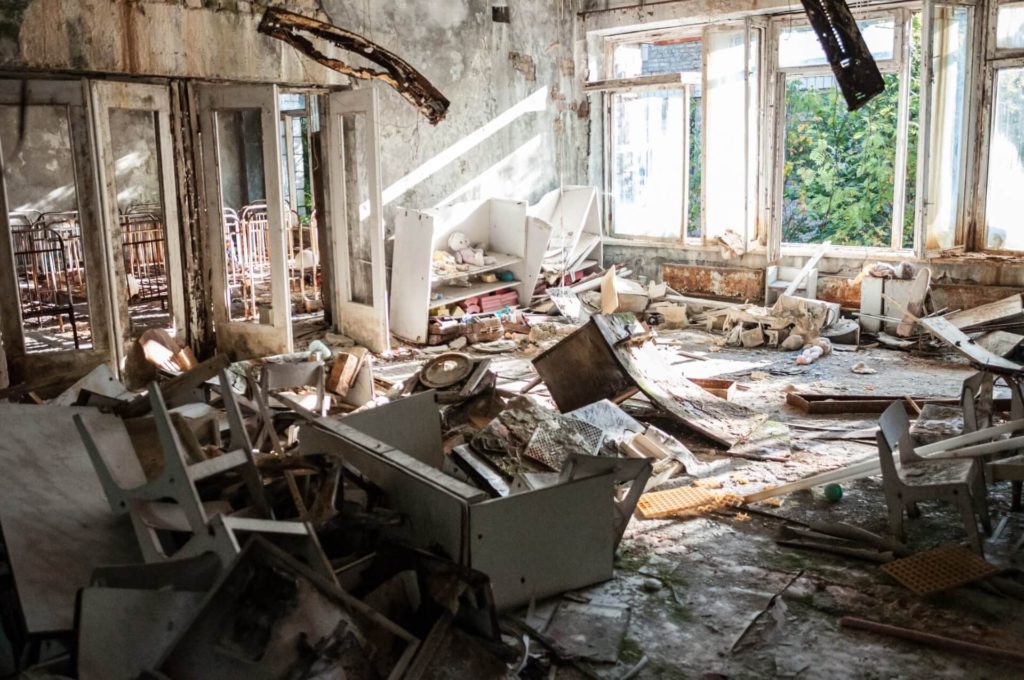The Risk of Asbestos Exposure After a Flood

Exposure to asbestos can lead to serious health consequences, such as an increased risk of developing mesothelioma, lung cancer, or asbestosis, a severe progressive lung disease. Exposure often occurs when a worker or homeowner inhales asbestos fibers, which then attach themselves to the lungs. In Nebraska, we often attribute the risk of exposure to working in older factories, demolition projects, or antique products, but there is another major risk few now about: natural disasters. Flooding and other natural disasters can damage homes that were built with material containing asbestos and lead to exposure among neighbors, cleanup crews, and first responders.
Asbestos and Midwest Floods
Asbestos was used in the construction of many commercial and residential buildings before the 1980s. These buildings are considered safe while they remain in good condition, but once they are ripped, broken down, or washed away by flooding, they release toxic asbestos fibers into the environment and air. Breathing these asbestos fibers in the aftermath of a flood can lead to serious health problems years after the disaster occurs, and most don’t even know they have been exposed until the cancer develops decades later.
Asbestos fibers released into the air by flooding may be difficult to detect. They are microscopic particles that travel through the air or in clouds of dust. In the aftermath of severe weather and natural disasters, preparation is essential to help prevent exposure to asbestos. Because of this increased risk during floods, which are frequent throughout the Midwest, including Iowa and Nebraska, government agencies at the state and federal level have outlined specific warnings to protect residents and workers.
Government Responses to Flooding
First and foremost for Nebraska residents is the Nebraska Department of Health and Human Services (NDHHS) Office of Environmental Health Hazards and Indoor Air. This organization handles several different environmental and health concerns for Nebraska residents, including chemical spills, fires, and toxic exposure. Following the 2011 floods, the agency recommended that all properties damaged by floodwaters be inspected for the presence of asbestos before they are renovated, demolished, or a fire burn is conducted. Debris should be kept wet before the inspection to help minimize the risk of asbestos exposure.
Alongside the NDHHS, on a federal level, the Occupational Safety and Health Administration (OSHA) warns that repair, renovation, or demolition operations after a flood can generate airborne asbestos that can cause cancer or chronic lung disease. The agency has developed regulations to help protect disaster cleanup workers from asbestos exposure, including specific safety procedures and equipment that can reduce the risk of developing serious health conditions. Employers are required to follow specific procedures to protect their workers from inhaling asbestos fibers.
Lastly, we have the Environmental Protection Agency (EPA). This massive organization oversees almost every situation that relates to the environment in the United States, including natural disasters and toxic exposure. The EPA warns that anyone working on removal, demolition, or cleanup of building debris after a flood needs to be aware of the presence of asbestos and to handle the materials properly. As stated by the EPA, exposure generally only occurs when asbestos-containing materials are damaged or disturbed in a way that releases asbestos fibers into the air. The agency states that asbestos exposure increases the risk of developing lung disease, and the higher the exposure, the greater the chance of harmful effects.
Who Is at Risk for Asbestos Exposure After a Flood?
In the wake of a natural disaster such as flooding, the first people on the scene face the highest risk due to the quantity of debris. This includes emergency response teams and early response volunteers. The risk of health effects from asbestos exposure increase with the length and frequency of exposure. First responders at risk for developing health consequences of asbestos exposure include:
- Firefighters
- Emergency response workers such as the American Red Cross and FEMA
- Law enforcement officials
- Coast Guard, Army, and Navy enlisted military personnel
- Cleanup crews, including state and local agencies, private contractors, and volunteers
What Should I Do if I’m Exposed to Asbestos?
Serious health conditions often occur over a long period of time due to repeat exposure. If you recently renovated a home with a quick DIY project, it is unlikely that you have inhaled enough asbestos to cause concerns. However, if you are a part of the high-risk groups listed above and have routinely worked on demolition projects after a Nebraska flood, you are more likely to develop a disease. Make sure to get regular checkups with your doctor and review your safety protocols with your employer and OSHA.
If you have developed mesothelioma, please know that there are options available to you. While this disease is fatal, early intervention can help limit the long-term effects and allow you to live your life as comfortably as possible. In addition, how ever you were exposed to asbestos, you are likely eligible to receive compensation from one of the several mesothelioma trust funds set up throughout the Midwest. To learn how to receive compensation after asbestos exposure, reach out to our Omaha personal injury attorney at Bottlinger Law L.L.C. at (402) 505-8234.
Bottlinger Law
Consultation Form
Our legal team is ready to help. Please fill out the form below to set up a free consultation with the Bottlinger Law team.